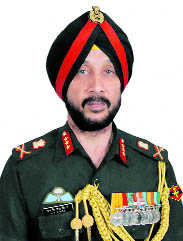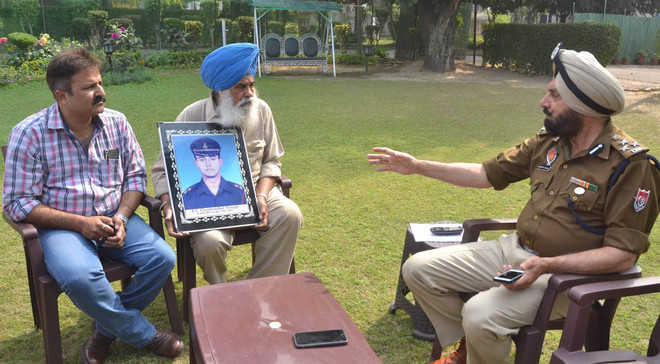 A file photo of Sartaj Aziz, Pakistan Prime Minister”s Adviser on National Security and Foreign Affairs. — AFP
A file photo of Sartaj Aziz, Pakistan Prime Minister”s Adviser on National Security and Foreign Affairs. — AFPWashington, March 5
Madrasas along the Af-Pak border and tribal areas, in particular North Waziristan, had become a hub of terrorist activities, Pakistan’s top diplomat has said, but blamed it on the Afghan refugees, who entered the country when the US pushed the Taliban out of power after the 9/11.These madrasas had well-oiled terror infrastructure, beyond imagination, running bomb-making factories, terrorists training centres and those to train suicide bombers – all under multi-storied basement under the mosque, Pakistan Prime Minister’s Adviser on Foreign Affairs Sartaj Aziz told a group of defence writers here this week.”In one mosque that I visited, I remember, in Miranshah, from outside we did not see anything. But under the mosque there were a 70-room basement, three stories, in which there were four-five IED factories, four-five suicide training centres, communication network, VIP room, conference rooms, amazing infrastructure,” he said, giving details of the how deep rooted terror infrastructure had developed in Pakistan.In North Waziristan, where the Pakistan Army had launched operation Zarb-e-Azb in June 2014, Aziz estimated there were 30-40 such mosques with similar kind of infrastructure.Pakistan’s tribal areas along the Af-Pak border have seven agencies and North Waziristan is one of them.Aziz, who was here to attend the 6th US-Pakistan Strategic Dialogue, said this while giving details of the steps being taken by the Pakistani army against terrorists.”According to our estimates, the IED factories in this particular agency if they had gone their way without disruption, they had enough IEDs for next 20 years for the scale of attacks that they were doing. Those have ended now. Communication infrastructure has been disrupted,” Aziz said.He, however, blamed the Afghan refugees for the tribal areas of Pakistan becoming a hub of terrorism.”We inherited this problem of (terrorism), 9/11 onwards when people were pushed into our side of the border and they became a threat to us, because they lost their hold in their part of the world. Our tribal belt between Pakistan and Afghanistan is a very long belt and a very open territory. So they came and established themselves,” he said.”Initially they came to seek refuge, but they soon realised that unless they controlled territory and resources they can’t survive there. So they started expanding their activities and by 2007-08, they had covered most of the tribal areas. They killed the tribal leaders, then they stared establishing their communication networks, IED factories, suicide training centres,” he noted.“It was unbelievable how quickly they expanded and trained themselves in the tribal belt. So we started getting large scale attacks in our cities, suicide attacks and bomb blasts,” Aziz said, adding that in these 14 years, Pakistan lost about 60,000 people, including 10,000 security personnel.He estimated the economic losses beyond $100 billion.The toughest area infested with the terrorist was the North West Frontier Province, he said.Out of seven agencies that the security forces have cleared, those groups, which could not survive there migrated or shifted their activities to North Waziristan.”So North Waziristan by 2013 had become hub of many local and foreign terrorist groups. Our own Tehrek-e-Taliban Pakistan, which we call TTP, Chechen, Uzbeks, Chinese… it became a heart-bed of various (terrorist) things. Our own writ was very limited at that time, apart from military camps,” Aziz said.In June 2014, Pakistan Army started operation Zarb-e-Azb, he said, adding that it was a very difficult operation.”We have achieved the results that we needed because the entire infrastructure has been destroyed. So this has been a very successful operation,” he said, adding that the Nawaz Sharif government is determined to act against terrorism.He told defence writers that the terrorist attack at an army-run school in Peshawar changed the entire narrative and created a consensus against terrorists in Pakistan.”Before that there were pockets of support for them. But when this thing happened in December 2014, all the political parties agreed on a 20-point national action plan to take on terrorist groups,” he said.According to Aziz, once the anti-terrorism operation started in tribal belt, terrorist groups and leaders moved to the cities and urban centres.”They all migrated to cities. They did not had a big infrastructure of FATA (federally administrated tribal areas), but around cities they could rent one or two houses, make small IED factory, suicide attacks or small bomb blast and their capacity to damage remained,” he said.The police and intelligence operation has resulted in apprehending of 25,000 terrorists across the country.”As a result last year the total number of terrorist attacks have dropped by half and is gradually going down because their capacity to operate has come down,” he said.Aziz said the next phases of the National Action Plan is madrasas reforms and tightening of their funding sources.These madrasas, he said, were jointly “funded, armed and created” by the US and Pakistan to train people to fight against the Russians in Afghanistan.”We have about 75,000 unregistered madrasas,” he said, where people are trained, brainwashed, and prepared for terrorist activities.”All of the madrasas are not terrorist-related but many of them are, so now those madrasas have been notified: Either close down or register yourself,” he told separately at the Council on Foreign Affairs, a top American think-tank.The Sharif government, he said, is also working on de-radicalisation, which means how do you win the minds and hearts of these people and curriculum reform.”The whole counter-narrative for—the extremist narrative, and particularly the ISIL narrative, is very powerful and very catchy for the young people. So you can’t counter it by sermons from religious leaders. It requires a very different approach to identifying these messages and identifying the correct response to these,” he said.Aziz said that the plan is moving in the right direction because of the commitment of the Sharif government to take action against terrorism without discrimination. — PTI


















































































































